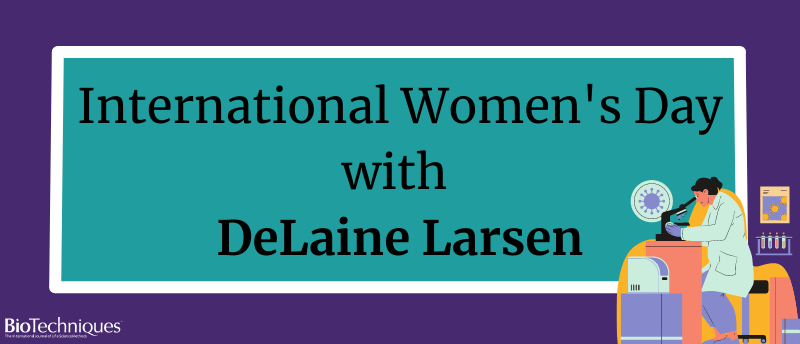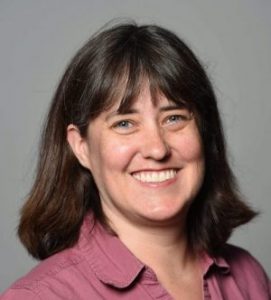International Women’s Day with DeLaine Larsen

In our International Women’s Day series, we talk to women in STEM to hear more about their research and their interests away from the lab bench.
 DeLaine Larsen is the director of the Center for Advanced Light Microscopy at the University of California, San Francisco (CA, USA), supporting researchers in their microscopy experiments. Larsen talks about the day-to-day of working at an imaging center and the challenges of maintaining a work/life balance, especially around deadlines.
DeLaine Larsen is the director of the Center for Advanced Light Microscopy at the University of California, San Francisco (CA, USA), supporting researchers in their microscopy experiments. Larsen talks about the day-to-day of working at an imaging center and the challenges of maintaining a work/life balance, especially around deadlines.
What is involved with being the director of an organization like the Center of Advanced Light Microscopy?
My job is a mixture of a lot of different roles. My main job is supporting microscopy experiments for the researchers who come into the microscopy core. I consult with different research groups on experimental design and analysis, which includes helping to decide on the best technique to answer their question, discussing the trade-offs, and troubleshooting. I’m also responsible for the maintenance and upkeep of the equipment. In addition to my hands-on tasks in the lab, there are also numerous administrative tasks needed to keep the core running.
What kind of research projects do you provide technical support for at the Center of Advanced Light Microscopy?
We serve a very broad range of research in the core. The largest part of our user base are cell biologists and neuroscientists. We image across multiple scales from isolated proteins, cells, tissue sections, whole organs and model organisms such as C. elegans and zebrafish.
What made you interested in specializing in microscopy?
I trained as a neuroscientist and just always used microscopes as I worked on different projects. After starting my position in the imaging core, I have really expanded my skill set and enjoy helping researchers match their research needs with the correct microscopy technique.
What excites you most about your job?
One of my favorite parts of science is troubleshooting and figuring out a problem. I really love chasing problems and figuring out what is going on. This is what made me happy when starting new projects and my role in the core lets me focus on this aspect of projects.
What are some of the best parts of your job, and your least favorite parts?
I really love helping people and to be able to advance their research. I view my role as taking a small piece of worry off someone’s plate by doing everything I can to make their imaging experiments work. My least favorite part of the job is the bureaucracy of the university, especially around IT support for my instruments.
What did you always want to be?
I have always loved science and have followed this path during my entire career. My father was a small-town veterinarian and I helped in the clinic for as long as I can remember. I was always encouraged to follow anything that piqued my interest.
What is your morning and evening routine?
My morning routine is to get up and help get my kids out of the house for school. I then head into the lab and spend the first part of the morning responding to emails and making the plan for the day. My days tend to be very scheduled since this job really comes down to time management and prioritizing problems. In the evening I try to squeeze in some exercise and help run any errands for the kids. We always do a sit-down family dinner and then help with homework and relax.
What’s your favorite thing to do in your downtime?
I’m an outdoors person who loves hiking and camping. It’s been a major activity my entire life and living on the West Coast (USA) there are so many places to explore. Spending time outdoors really helps me to reset and recharge.
What challenges do you face day to day as a woman and how do you balance these with your working life?
The biggest challenge is balancing the demands of my career with my family time. Family is very important to me and I work hard to not let the time with my family get eclipsed by deadlines at work. With this comes the guilt of feeling you are not doing enough on either side of the equation.
Who is your inspirational hero?
This is a tough question. I’m not sure who really fits the bill here and there are many people that I look up to and I aspire to be like. If I have to pick just one, I think it would be Barbara McClintock, a cytogeneticist, because she just followed the results.